Repair of worktops made of laminated chipboard

The working surface of any table is inevitably exposed to mechanical stress, due to which it quickly loses its attractive appearance. In particular, this aspect applies to kitchen countertops made of laminated chipboard.
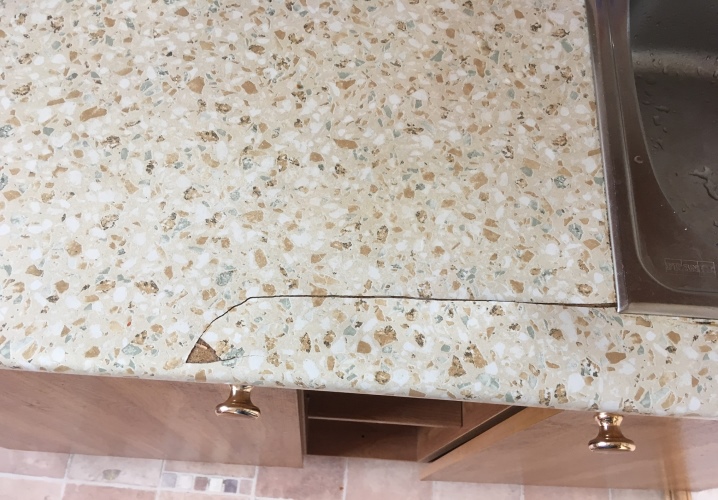
Of course, scuffs on furniture, chips on the corners of the headset, scratches and burn-throughs are striking and spoil the interior, and regular replacement of work surfaces will be too expensive.
However, it is not always worthwhile to resort to buying a new product in order to tidy up the appearance of the kitchen. It is quite possible to update the tabletop with your own hands at home.
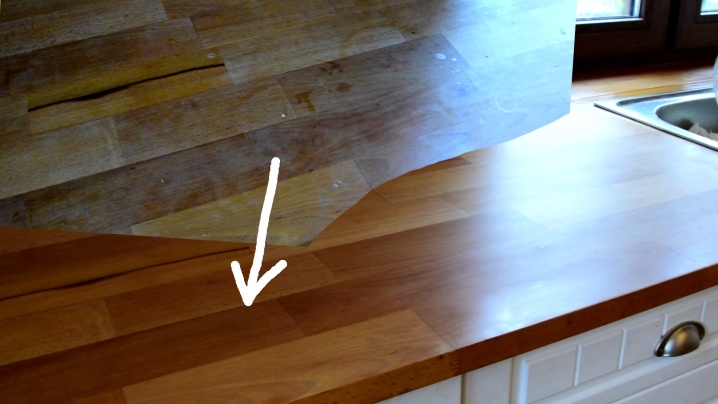
Peculiarities
The surfaces of kitchen sets take on an increased load, since there are often situations when vegetables and bread are cut on them, meat is cut and beaten without the use of special cutting boards. There are times when a hot kettle or a frying pan is placed on the laminated chipboard, and water accumulates on the countertop in the area of the sink, as freshly washed wet dishes are piled on the surface. All this over time (and sometimes immediately) leads to damage to the material, leaves scratches, cracks, burns or forms a swelling.
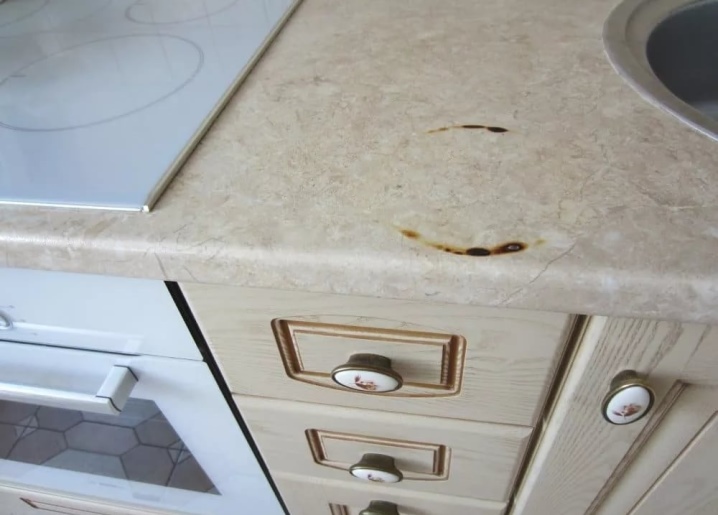
To a lesser extent, the surfaces of work tables for offices, living rooms and other rooms are subject to wear, however, scuffs from moving objects, accidental scratches from sharp tools often appear on them.
In the modern market, you can find many means to cope with such a problem on your own, without resorting to the services of craftsmen and without buying new furniture.
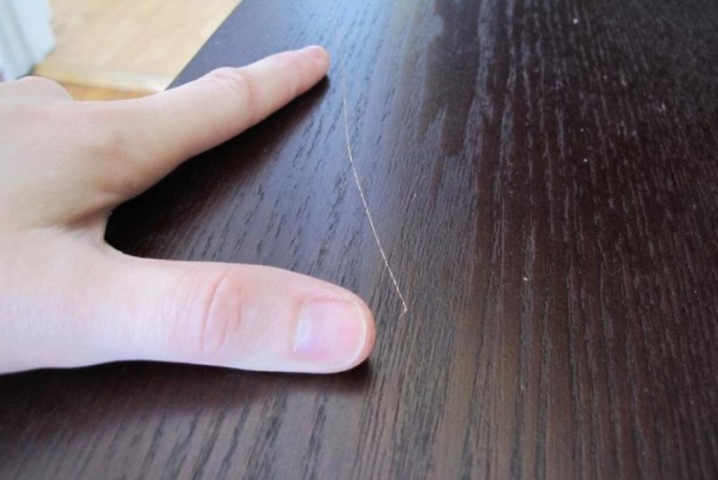
Possible damage
Before proceeding with the repair of the product, you should carry out a small diagnosis and assess the nature of the damage. Depending on this, the method, the necessary materials and tools will be selected.
As a rule, types of damage are typical for all chipboard countertops.
- Scratches. Appear from the impact of any sharp objects (for example, from a knife while cutting food).
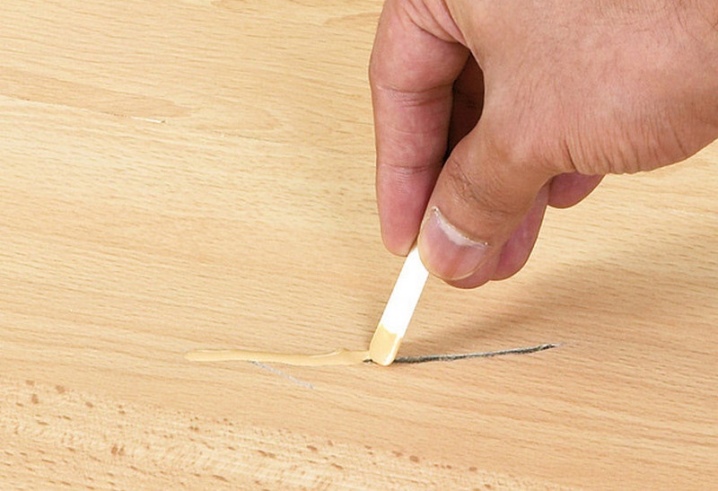
- Cracks. May appear due to a high load on the surface in one of the parts, sudden temperature changes. A less common reason is incorrect installation of the entire headset, due to which the operating panel is not installed strictly horizontally. The nuance of this problem is that the crack can be repaired if it is small. If the split has occurred over the entire surface, then it is pointless to waste time on gluing.
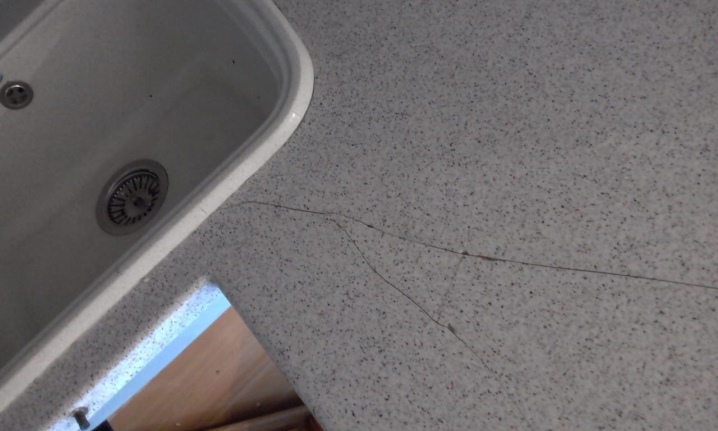
- Chips. This damage forms at the edges of the product. They are small recesses that reveal the wood "filling" of the countertop. In addition to its ugly appearance, this area becomes accessible to moisture penetration.
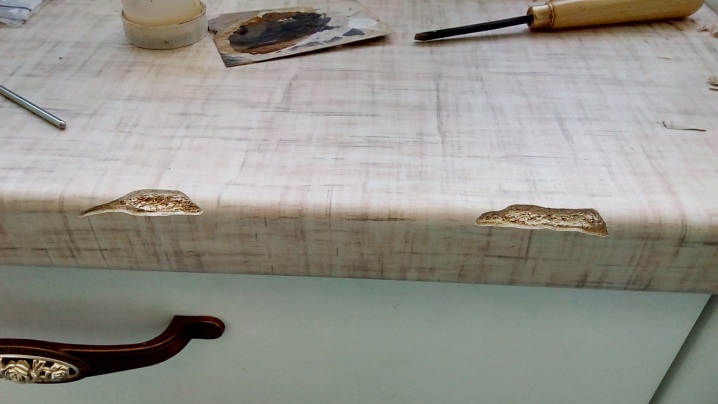
- Cracks and dents. They arise from sharp blows with a heavy object, for example, a hammer when beating meat.
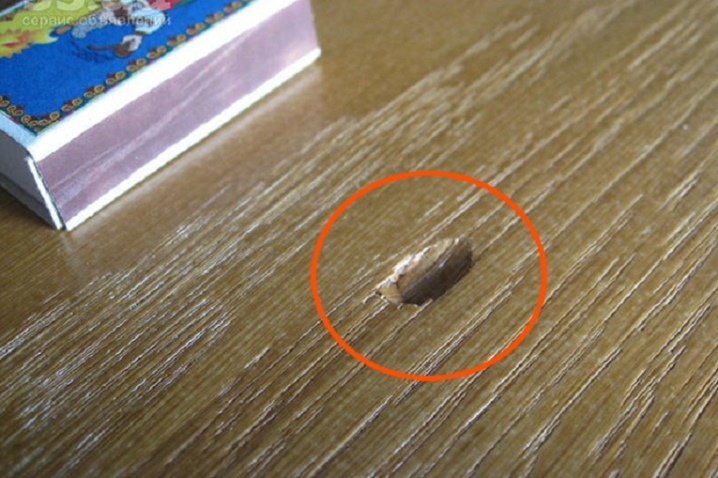
- Burns. Formed from contact with hot objects, most often occur in the area of \ u200b \ u200bthe hob.
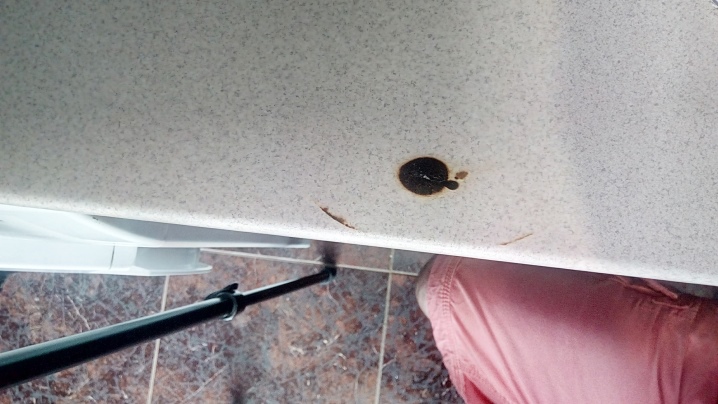
- Swelling. In places where moisture accumulates, it is often possible to notice that the panel is swollen, although the laminated surface itself is not damaged. This suggests that water constantly seeps into this area and soaks the woody layer.
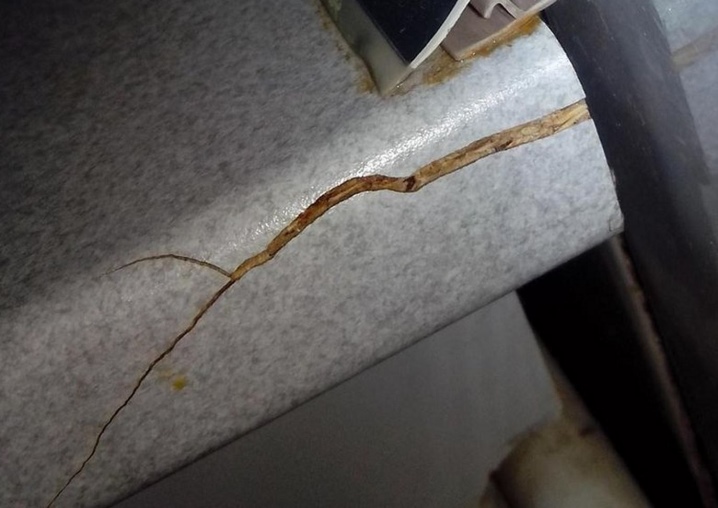
Necessary materials
It is worth preparing in advance the means with which the repair will be carried out:
- furniture wax (hard and soft) - to restore volume in places of chips and dents;
- varnish and polish - to fix the applied coating, as well as to give the former shine to the restored place;
- retouching agents (felt-tip pens, markers or furniture stroke) - for painting over small scratches, painting wax in a suitable shade;
- PVA glue - for impregnating sawdust and filling voids in places where the surface is swollen;
- melamine tape - for decorating the ends;
- sealant - for sealing the joints between the surface and the sink to reduce the risk of getting wet.

How do I fix a countertop?
Let's consider step by step the processes of eliminating various types of damage.
Peeling laminate film
This is the smallest problem that occurs when a surface interacts with moisture. In this case, it is enough to "put" the unsticked area on the glue, press it down with a press and leave it to dry completely.
To avoid such a nuisance in the future, it is worth treating all the joints of the countertop with a waterproof sealant, especially carefully near the sink.
It is also recommended to apply a silicone coating under the countertop.
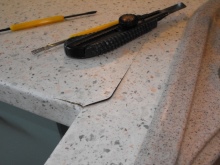

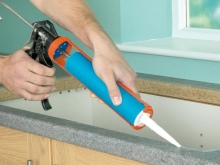
Soaking the surface
If the chipboard layer has swollen under the laminate, it will take some effort to correct the situation.
For work you will need:
- spatula or clerical knife;
- PVA glue;
- bars (as a press);
- clamp.
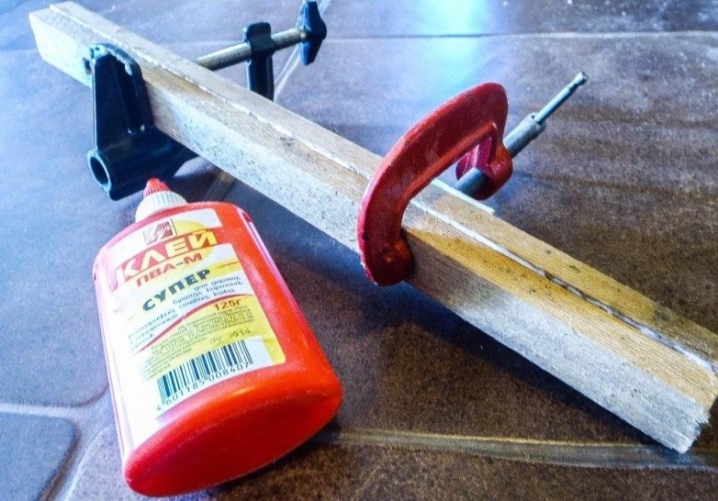
The work algorithm includes several points.
- The tabletop is dismantled, sawdust is carefully raked out of the damaged area. The panel is removed to dry, for example, to the battery.
- After drying the countertop in a technical container, the extracted sawdust is mixed with glue, bringing the mixture to the consistency of a thick paste. The resulting paste with sawdust is tightly filled in the voids and tamped with a knife or spatula.
- The restored area is covered with bars and clamped with a clamp. In this position, the product is left for 24 hours until the glue is completely dry.
- Over time, the press is removed, the repaired area is leveled with a knife and sandpaper. This is followed by a silicone treatment and gluing with melamine tape or plastic edging.

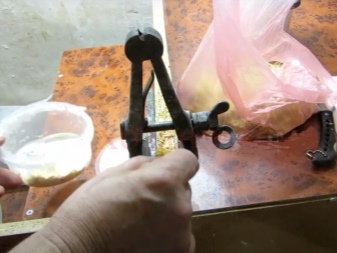
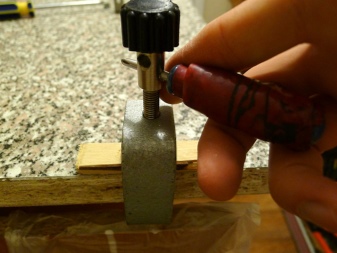
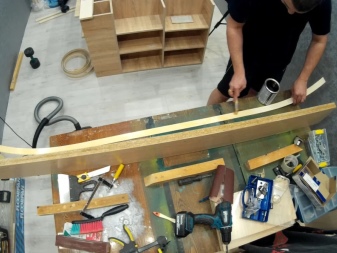
Cracks
If even small cracks appear, the countertop requires urgent repair - otherwise the crack may increase, and then the panel will no longer be repaired.
From the tools you should prepare:
- PVA glue;
- medical syringe (with or without a needle);
- 2 clamps;
- retouching felt-tip pen or furniture touch.

Here's a step-by-step guide.
- Glue is taken into the syringe and the crack is filled with it along the entire length. If it is very thin, a needle is put on the syringe for a more precise smearing.
If the crack is deep, it is best to use a syringe without a needle.
- Clamps are installed on the sides of the damaged area and the surface is tightly adjusted so that the crack contracts well.
- A day later (after the glue has dried), the restored area is painted over with a suitable tone.
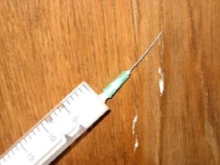

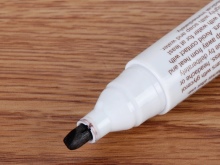
Chips and breaks
With such damage at the edges of the countertop, even more laborious repairs will be required. To remove chips and dents on the chipboard, you should prepare:
- hard wax;
- chisel and sandpaper;
- retouch;
- a piece of soft tissue;
- colorless varnish.
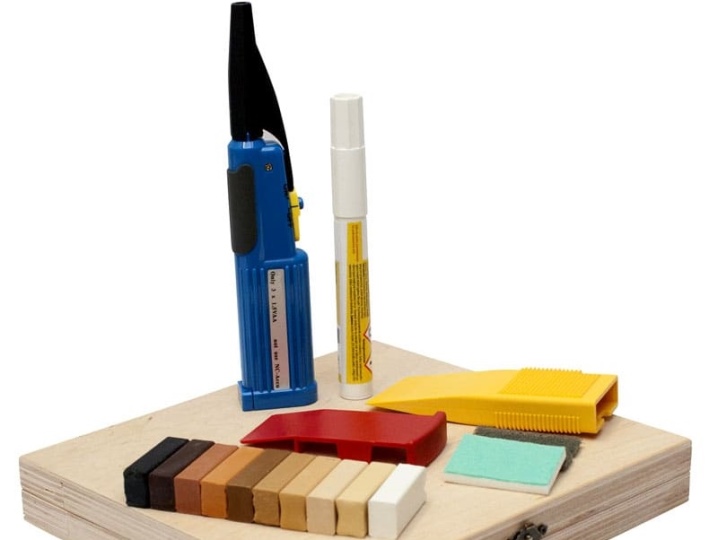
The actions will be as follows:
- align the edges of the chip and grind it with sandpaper;
- the wax is melted to a viscous state (for example, by holding the container over the stove);
- the molten composition is applied to the damaged area, giving it the desired shape;
- in the case of a dent in the center of the product, putty the depression with wax;
- after the wax hardens, cut off the excess and grind;
- apply retouching with a felt-tip pen or furniture stroke (so that the borders are not so noticeable, use a damp cloth to wet the surface);
- in conclusion, the area (and sometimes the entire surface) is varnished to fix and give shine.
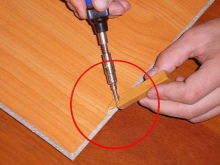
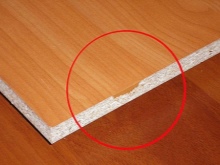
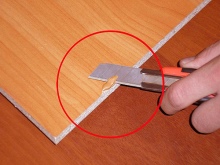
Scratches
If the scratches are deep, you can use a mild wax. It is applied to the scratch with a rubberized spatula.Then the problem area is polished with a cloth and painted over with a suitable shade. Finally, the worktop should be coated with a colorless varnish.

Burns
If the protective laminate layer has been exposed to high temperatures, and an ugly burn mark remains on it, you will have to follow these steps:
- the damaged place is rubbed with sandpaper (if the burn-through is deep, you should use a chisel to remove the charred canvas);
- soft wax is applied to the prepared area, the base is leveled, then sanded properly with a soft cloth;
- retouched with a suitable shade, after which the surface is covered with a colorless varnish for better fixation.
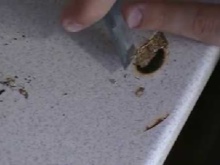
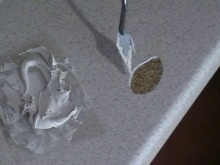
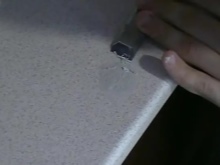
Recommendations
In order for the restoration of the countertop to be successful, it is advisable to pay attention to the advice of professionals.
- To prevent swelling of the chipboard base under the laminated film, treating the ends with a water-repellent sealant or silicone compounds will help. It is best to do this right away when installing the kitchen unit.
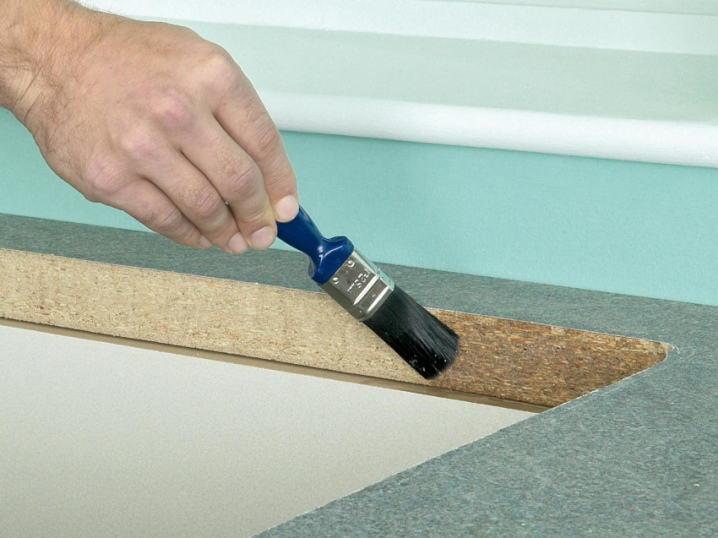
- The best option is table tops, the edging of which is made of aluminum tape. However, this does not always fit into the interior of the kitchen.
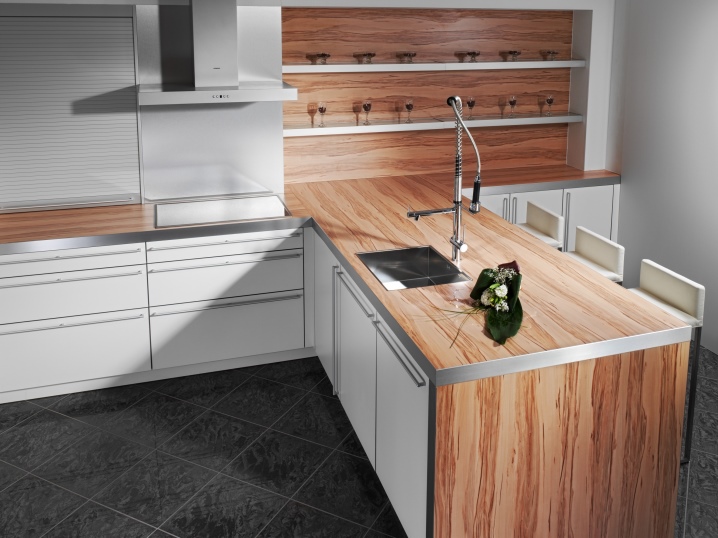
- Furniture tinted markers can be purchased at home improvement stores.
To achieve the desired shade, it is better to use two strokes that differ in tone - one slightly darker than the other.
First, the lighter is applied, then the darker.
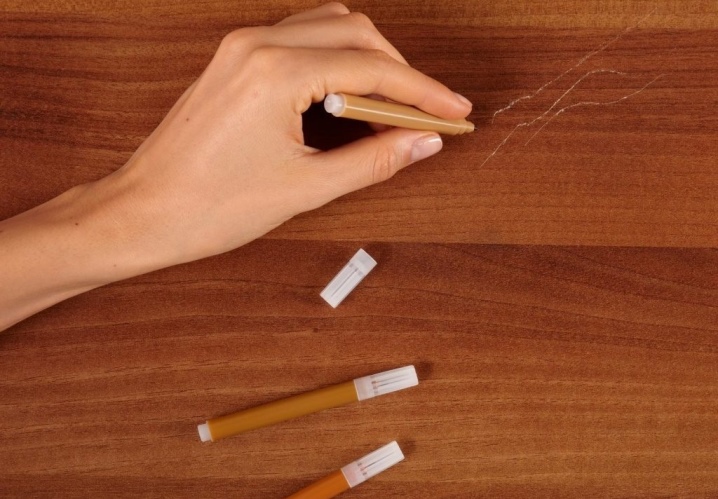
The features of repairing chips on a laminated chipboard worktop can be found in the following video.













The comment was sent successfully.